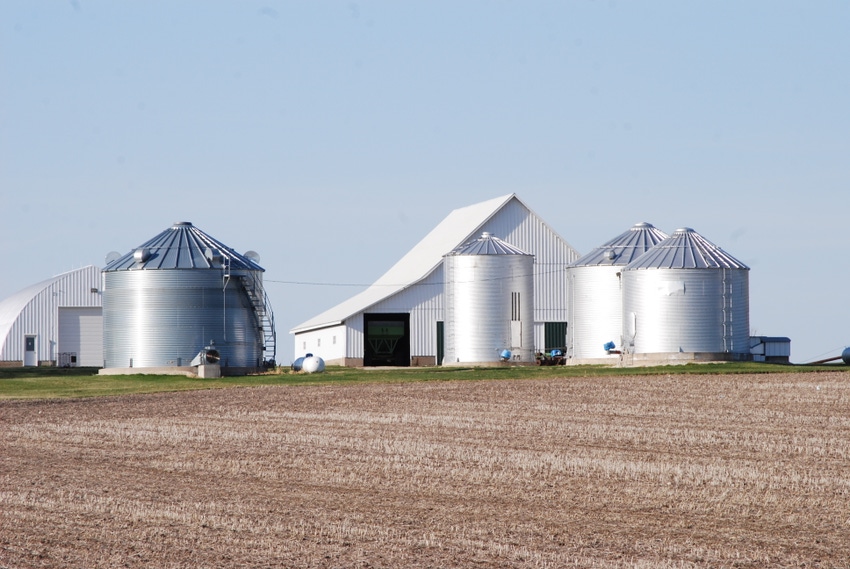March 29, 2019

We have three 20,000-bushel bins. I’m worried the stored corn may go out of condition with warmer weather. I don’t expect to empty them for another few months unless the markets change. How should we protect the grain? — L.R., Iowa
We’re a bit anal about grain storage. We dry corn to 14.5% to 15% moisture after it is first cooled and properly aired out. We remove the fines coming off the back of the dryers using a brush auger, flowing corn over a perforated housing grate, and using a vacuum system to convey the fines to a collection pile. These are picked up by a local cattle feeder. Despite removing fines at the dryer, a grain spreader is used for each bin.
This initially temped, aired and stored corn might still have a September harvest temperature of 70 to 80 degrees F, so our objective is to lower that to below 50 degrees as quickly as night temperatures allow. Similar to soil temps for corn germination, grain below 50 degrees stops most nasty organisms from growing.
Most of our bins are 48 feet with 50,000 bushels or 36 feet with 20,000 bushels. Our 36-foot bins take 48 hours to migrate the moisture front through the grain, and the 48-footers take 75 hours.
With about 10 hours of cool temps nightly, it takes four nights with fans for the 36-footers and eight for the 48-footers.
Once below 50 degrees, use two to three more fanning sets to get corn as cold as possible during the chilliest stretch of winter. Get corn temps to single digits or below.
Hopefully when you were done with the freezing process, you capped your fans with high-quality garbage bags and had a good seal where the lower bin ring sits on the concrete foundation.
By summer, you want a refrigerator effect for the corn on the floor, against the side of the bin and at the top of the pile. Have plenty of roof vents to exit hot spring air, and put a vent at the top of your bin in the fill cap to more quickly exit roof heat.
Corn is a great insulator. Come July, cleaning out bins will be the coolest job on the farm.
Jerry and Jason Moss operate Moss Family Farms Inc. [email protected]
About the Author(s)
You May Also Like




